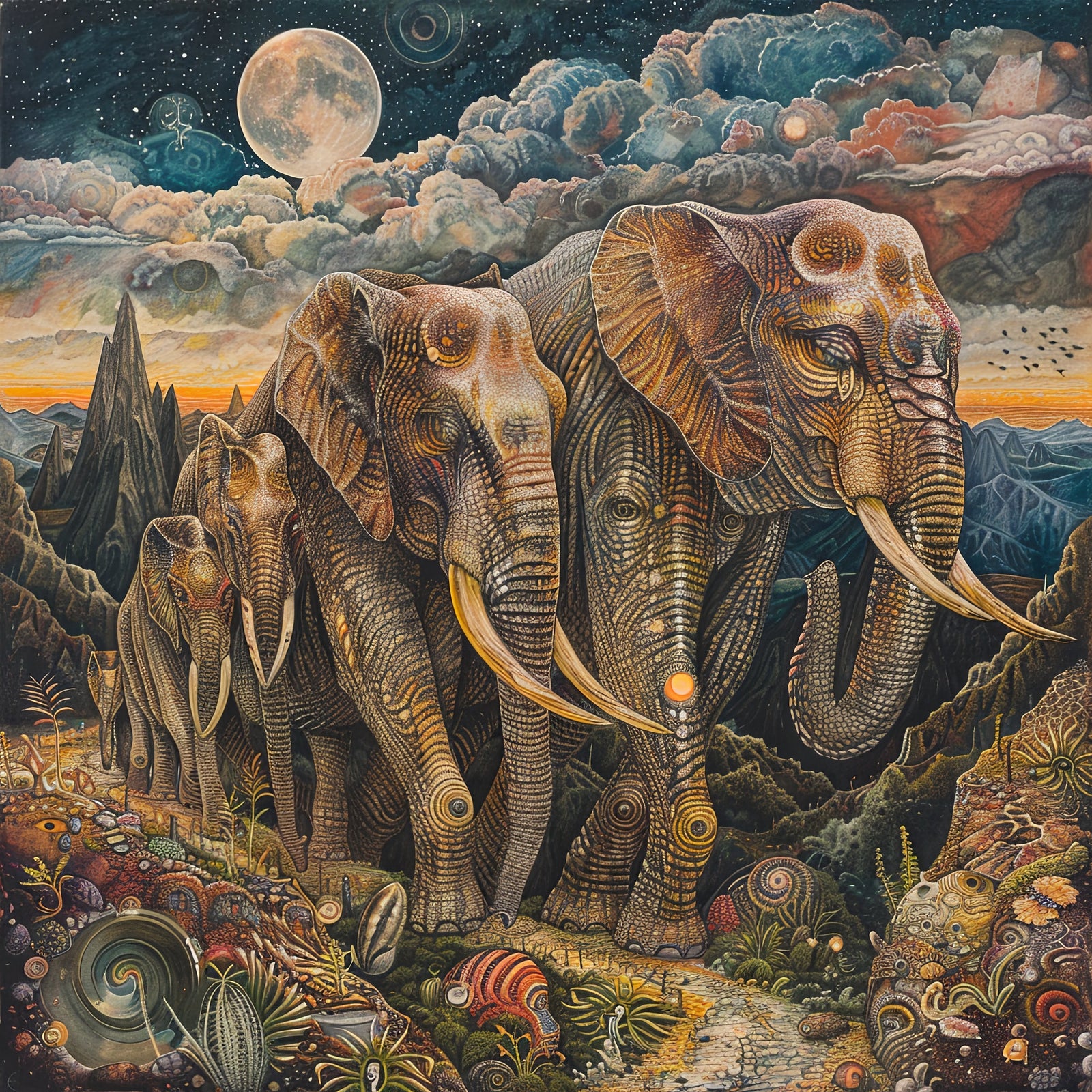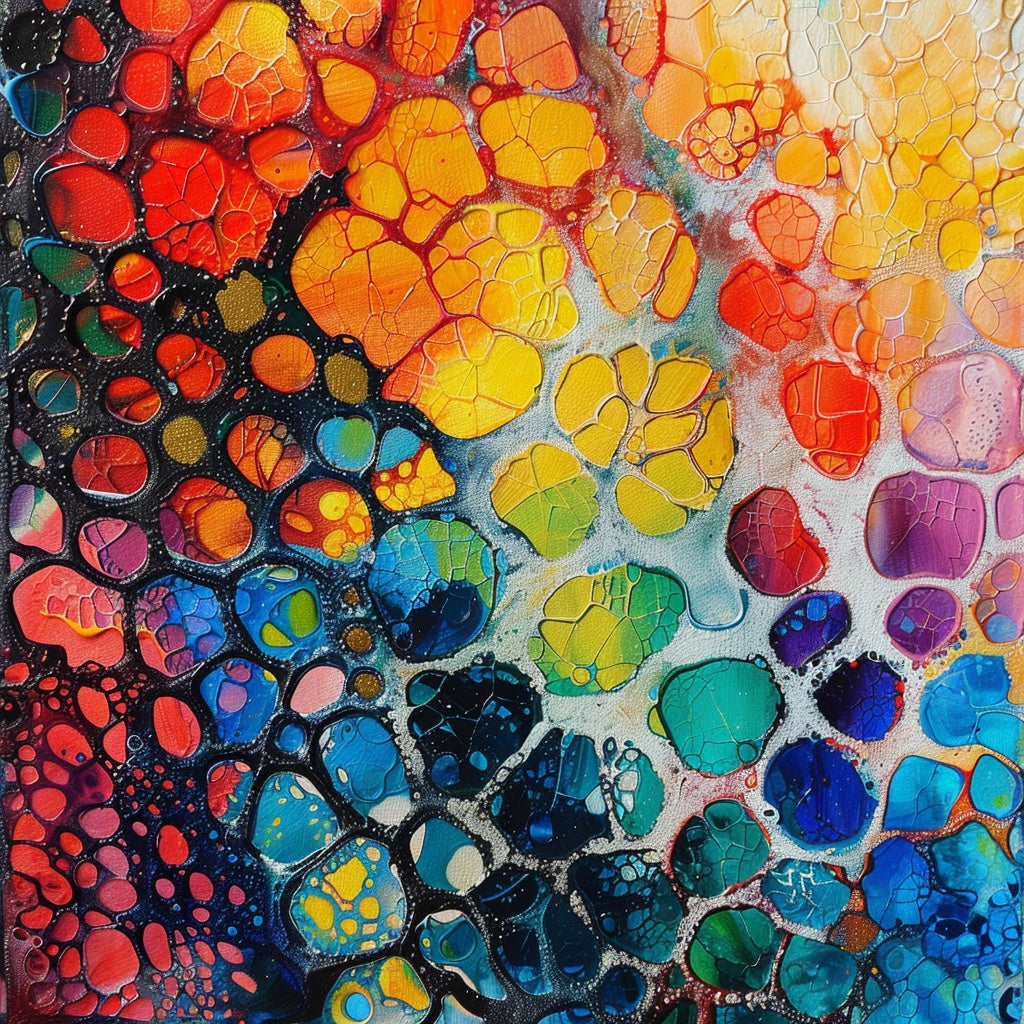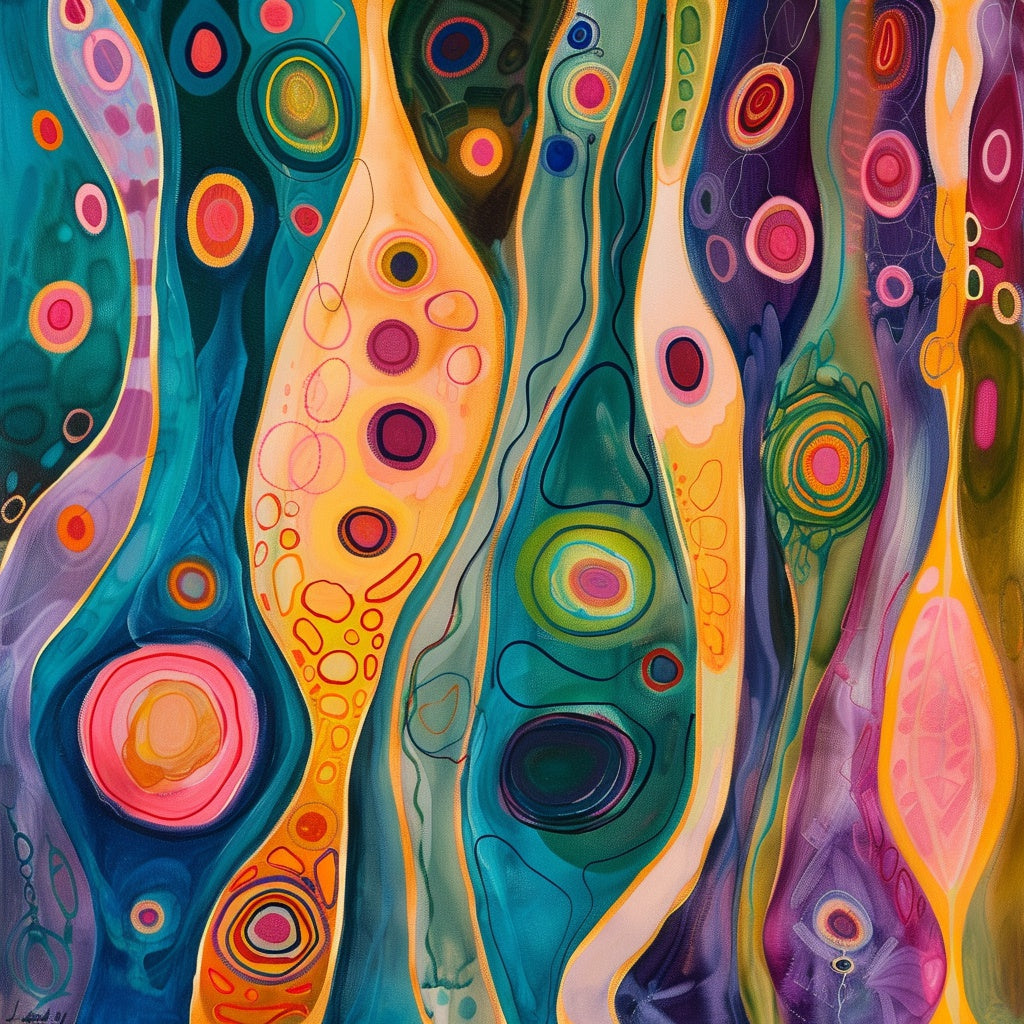A Deep Dive into AI Art Generators: Choosing the Right Tool in 2025
The rise of AI art generators has revolutionized digital art, offering powerful tools that convert text prompts into stunning visuals. This guide compares the top AI art platforms in 2025, examining their strengths, weaknesses, and unique features to help you make an informed choice. Whether you're a professional artist, designer, or hobbyist, understanding the capabilities of these tools is key to unlocking your creative potential.
Table of Contents
- Introduction
- Top AI Art Tools in 2025
- Comparing Quality and Versatility
- Head-to-Head Comparisons
- Example Artwork
- Synthesis and Conclusion
- Feature Table
Introduction
The emergence of AI art generators has profoundly impacted the creative landscape. These tools, powered by sophisticated algorithms, translate text prompts into impressive visuals, offering new avenues for creativity. This report will explore the leading platforms in 2025, comparing their quality, versatility, and unique features. By examining various aspects such as image quality, artistic styles, ease of use, customization options, and pricing, this analysis aims to help you choose the AI art tool that best fits your needs.
Top AI Art Tools in 2025
In 2025, several AI art generators have risen to prominence, each with distinct capabilities and features. Here are some of the most well-known and widely used platforms:
- Midjourney: Known for producing high-quality images with a distinct artistic style.
- DALL-E 3: Developed by OpenAI, this tool is renowned for its ability to generate images from detailed text descriptions.
- Adobe Firefly: Integrated within Adobe's Creative Cloud suite, Firefly offers AI-powered photo editing and image generation.
- Canva: This popular design tool includes an AI art generator that simplifies product visualization and sketching.
- Ideogram: Specializes in creating customized images with a focus on typography and design.
- WOMBO Dream: Creates unique and abstract images using a user-friendly interface.
- DreamStudio: Offers a range of AI art models to choose from, generating high-quality visuals.
- Leonardo AI: Designed for creating realistic portraits and images with advanced features.
- Luma Photon: A collaborative tool allowing for high control over image generation.
- NightCafe: This platform engages users through daily AI art challenges.
Comparing Quality and Versatility
To accurately evaluate AI art tools, it’s crucial to consider factors like image quality, artistic styles, ease of use, and customization options. These elements contribute to the tool's overall effectiveness and user satisfaction.
Image Quality
High image quality is fundamental for any AI art generator. Several platforms are known for consistently producing high-quality results:
- Midjourney: As one of the first in the market, Midjourney consistently generates high-quality images with a unique artistic style.
- DALL-E 3: This tool automatically enhances prompts to produce stronger images; while this can sometimes lead to deviations, DALL-E 3 excels in detail and realism, closely adhering to text prompts.
- Adobe Firefly: Known for creating photorealistic images and offering advanced enhancement tools, Firefly is trained on Adobe Stock, openly licensed content, and public domain content, which makes it safer for commercial use. It also has a beta feature to generate videos.
- Leonardo AI: Leonardo AI produces high-quality images with an emphasis on detail and realism.
Artistic Styles
The ability to emulate different artistic styles is a key indicator of an AI art tool’s versatility. Here's how various platforms perform in this area:
- Midjourney: Offers a wide array of styles including photorealistic, abstract, and surreal.
- DALL-E 3: Although capable of emulating different styles, it often leans towards an impressionistic approach.
- Adobe Firefly: Specializes in an "advertising" style, ensuring clarity and safety, and also offers a text-to-vector feature ideal for creating logos.
- WOMBO Dream: Provides a variety of styles, including realistic, comic, and abstract.
- Stable Diffusion: Offers flexibility in generating diverse styles.
Ease of Use
User-friendliness makes AI art tools accessible to all users. Here are some platforms that stand out in ease of use:
- DALL-E 3: Stands out for its ease of use, integrating smoothly with ChatGPT, which makes it easy to use with natural language prompts. It can be accessed via OpenAI's suite, ChatGPT, or its own website.
- Canva: Features a very user-friendly interface with drag-and-drop functionality.
- Ideogram: Offers a simple and intuitive interface with a focus on text-based image creation.
- WOMBO Dream: Designed for simplicity, it is accessible to users of all technical skill levels.
Customization Options
Customization options allow users to fine-tune their AI-generated art. Here’s a look at how different platforms approach this:
- Midjourney: Offers extensive options, including control over style, aspect ratio, and image variations. Users can personalize styles by ranking images, helping the AI learn their preferences. It also has a "vary region" inpainting function for editing specific areas.
- Stable Diffusion: Offers a wide range of customization, such as negative prompts and adjustable parameters, and is available both online and offline.
- Leonardo AI: Allows for customization of styles, color palettes, and elements, enabling more user control.
Pricing and Accessibility
The cost and accessibility of AI art generators are key factors to consider. Here’s a pricing breakdown for various platforms:
- DALL-E 3: Requires a ChatGPT Plus subscription, which can be costly.
- Canva: Offers a free plan with limited features and a Pro plan with more advanced tools.
- Ideogram: Provides a free plan with limited daily prompts and paid plans offering more features.
- WOMBO Dream: Has a free version with limited features and a paid version with more options.
- Midjourney: Requires a paid subscription, with different tiers offering varying levels of GPU time and features.
- Adobe Firefly: Offers a free trial with limited credits, along with paid plans for higher usage.
- DreamStudio: Uses a credit-based system, giving new users free credits to start.
- Leonardo AI: Offers a free plan with limited daily tokens and paid plans with more features and higher token limits.
- Stable Diffusion: Has a free downloadable version for non-commercial use and paid plans for commercial use and higher usage.
Head-to-Head Comparisons
Comparing AI art tools directly can highlight their key differences and help users make informed decisions.
Midjourney vs. DALL-E 3
When comparing Midjourney and DALL-E 3, several key distinctions emerge:
- Photorealism: Midjourney excels in creating images that look real, while DALL-E 3 sometimes generates less natural visuals, despite aiming for perfection in detail.
- Detail: DALL-E 3 is superior in capturing intricate details.
- Prompt Interpretation: DALL-E 3 is better at interpreting both short and long prompts due to its advanced natural language processing abilities, outperforming Midjourney in this regard.
- Customization: Midjourney provides more powerful customization options compared to DALL-E 3.
Midjourney vs. Adobe Firefly
Here's a comparison of Midjourney and Adobe Firefly:
- Realism: When creating realistic photos, Firefly tends to produce more lifelike outputs, whereas Midjourney often overstylizes its results.
- Detail: Midjourney's outputs often have more texture and detail compared to Firefly’s.
- Artistic Styles: Midjourney is typically better at imitating artistic styles.
- Contextual Understanding: Midjourney demonstrates a greater understanding of context, leading to more cohesive images compared to Firefly.
Midjourney vs. Ideogram
A comparison between Midjourney and Ideogram reveals the following:
- Text in Images: Ideogram excels in adding text to images accurately, which is a feature Midjourney struggles with in terms of legibility.
- User Interface: Ideogram has a sleek web interface, which is easier to use than Midjourney’s Discord-based system.
- Privacy: Ideogram provides private image generation at a more affordable price than Midjourney.
Midjourney vs. WOMBO Dream
When comparing Midjourney and WOMBO Dream:
- Focus: Midjourney focuses on expanding human imagination through AI, whereas WOMBO Dream emphasizes user prompts and art styles.
- Community: WOMBO Dream places a stronger emphasis on community engagement.
Midjourney vs. DreamStudio
The main distinction between Midjourney and DreamStudio is in editing capabilities:
- Editing: DreamStudio provides inpainting and outpainting capabilities, which Midjourney lacks.
Stable Diffusion vs. Leonardo AI
Here's how Stable Diffusion and Leonardo AI compare:
- Safety: Stable Diffusion includes a Safety Checker Module and invisible watermarking, whereas Leonardo AI does not.
- Specialized Models: Leonardo AI offers specialized models for specific styles, while Stable Diffusion does not.
- User Interface: Leonardo AI has a more polished and intuitive interface.
Example Artwork
To illustrate the capabilities of different AI art generators, here are some examples of artwork generated by each platform:
Midjourney:
Prompt: "A futuristic cityscape at night with flying cars and neon lights, in the style of cyberpunk art."
Result: A vibrant and detailed image of a futuristic city with flying vehicles and neon signs, showcasing Midjourney's ability to capture complex scenes and artistic styles.
DALL-E 3:
Prompt: "A cat sitting on a windowsill, looking out at a rainy city street."
Result: A realistic and detailed image of a cat gazing out the window, capturing the mood and atmosphere of a rainy day.
Adobe Firefly:
Prompt: "A surreal landscape with melting clocks and floating islands, in the style of Salvador Dalí."
Result: A whimsical and dreamlike image with distorted objects and vibrant colors, showcasing Firefly's ability to emulate artistic styles.
Canva:
Prompt: "A simple logo for a coffee shop called 'The Daily Grind'."
Result: A clean and modern logo design with a coffee cup icon and stylized text, demonstrating Canva's user-friendly interface and design tools.
Ideogram:
Prompt: "A poster with the text 'AI Art Revolution' in a bold and futuristic font."
Result: A striking poster with clear and legible text integrated into a futuristic design, highlighting Ideogram's strength in typography and graphic design.
WOMBO Dream:
Prompt: "An abstract painting with swirling colors and geometric shapes."
Result: A vibrant and abstract image with dynamic shapes and colors, showcasing WOMBO Dream's ability to create unique and expressive visuals.
DreamStudio:
Prompt: "A photorealistic portrait of a woman with flowing hair and piercing blue eyes."
Result: A detailed and realistic portrait of a woman, capturing subtle features and expressions.
Leonardo AI:
Prompt: "A 3D render of a futuristic spaceship flying through a nebula."
Result: A high-quality 3D rendering of a spaceship with detailed textures and lighting, showcasing Leonardo AI's capabilities in creating realistic and complex visuals.
Synthesis and Conclusion
The realm of AI art generation presents various tools, each possessing unique strengths and weaknesses. Choosing the right platform depends on various factors:
- Image Quality: If realism and detail are priorities, DALL-E 3, Adobe Firefly, and Leonardo AI are solid choices.
- Artistic Styles: For a wide array of artistic styles, Midjourney and Stable Diffusion are excellent options.
- Ease of Use: DALL-E 3 and Canva offer the most user-friendly experiences.
- Customization: Midjourney and Stable Diffusion stand out for their extensive customization capabilities.
- Pricing: Canva and WOMBO Dream offer free plans, while others require paid subscriptions.
Ultimately, the ideal AI art generator depends on your specific requirements and preferences. Here’s a more tailored guide:
- Beginners: Start with easy-to-use tools like Canva or WOMBO Dream to gain experience with AI art generation.
- Professional Artists: Explore the advanced features and customization options of Midjourney or Stable Diffusion to enhance your creative workflow.
- Businesses: Consider platforms like Adobe Firefly or Stable Diffusion for commercial use due to their licensing and ethical policies.
Experimenting with various platforms, prompts, and settings is key to discovering the full potential of AI art generation. Don't be afraid to explore and push creative boundaries.
Feature Table
| Feature | Midjourney | DALL-E 3 | Adobe Firefly | Canva | Ideogram | WOMBO Dream | DreamStudio | Leonardo AI | Stable Diffusion |
|---|---|---|---|---|---|---|---|---|---|
| Image Quality | High |



Leave a comment (all fields required)